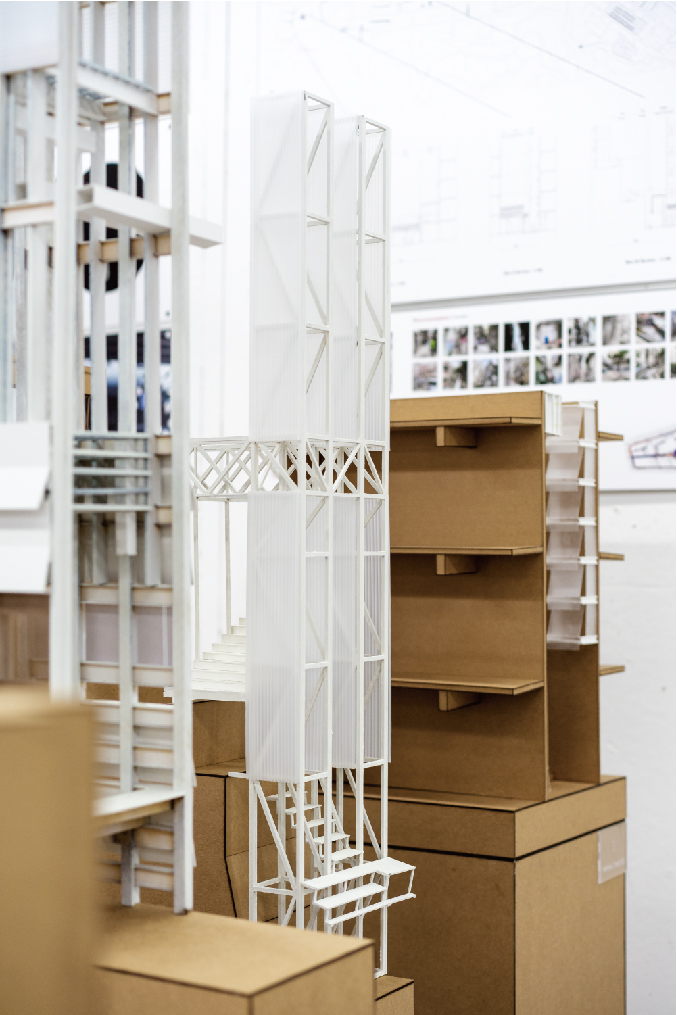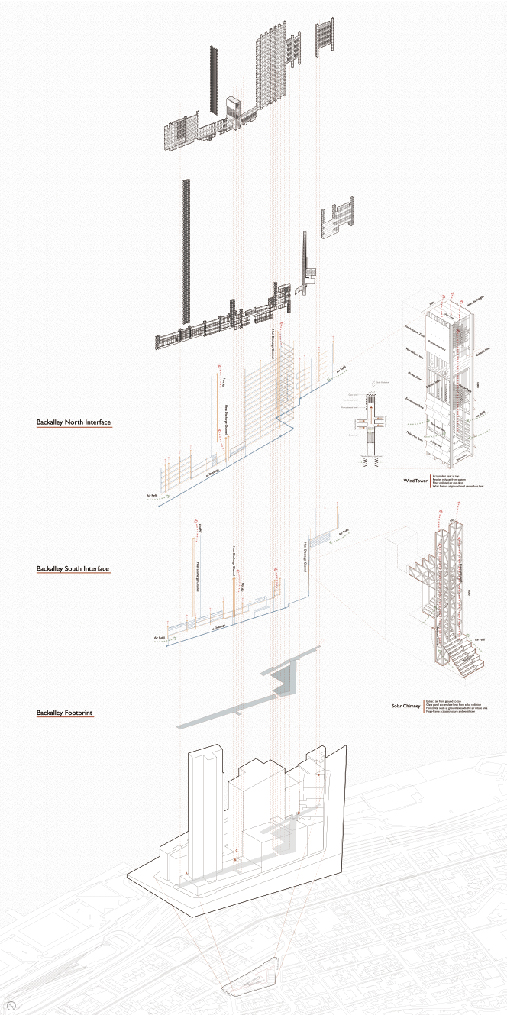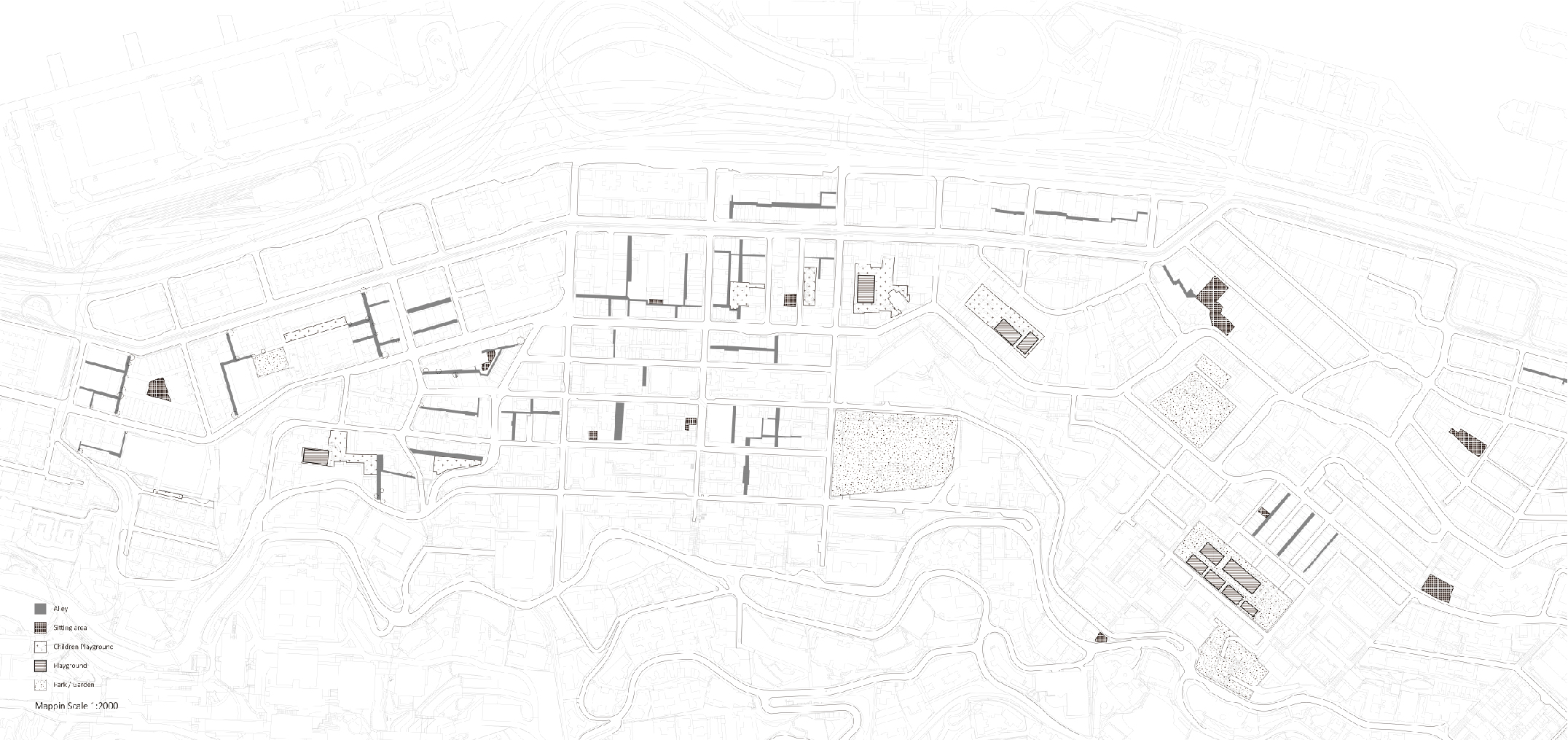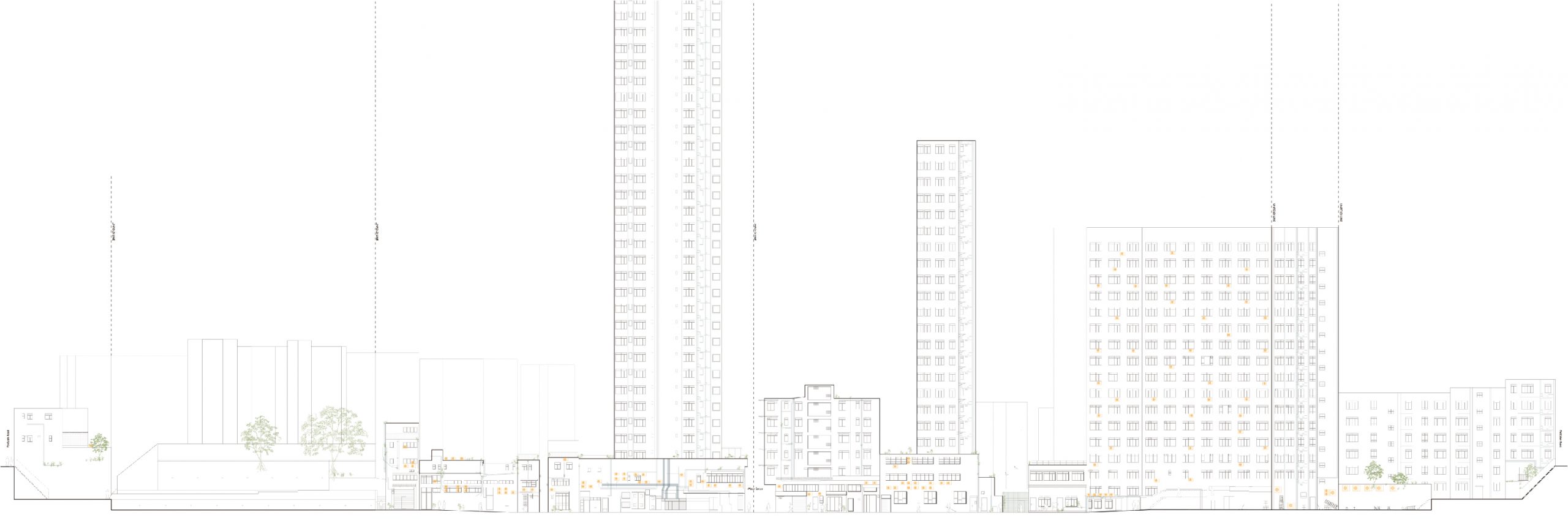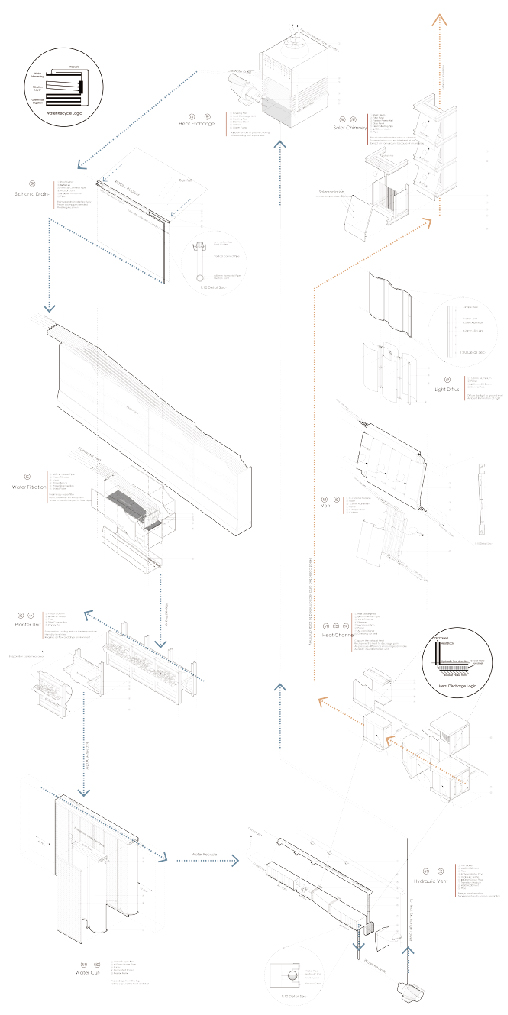隨著城市對公共空間的需求不斷增加,由政府和房地產開發商主導的後巷重建計劃旨在打造乾淨整潔的巷弄。 然而城市的後巷通常擠滿了建築設備,這些空間的功能性並未在提案中得到解決。 通過觀察和學習後巷環境,提取出對環境有害的影響,將後巷視為一個篩檢程式而非環境危害的根源,採用主動和被動的環境策略扭轉後巷負面印象,為公眾提供一個衛生且宜人的環境。
從學習後巷的環境開始,通過製作模型和實驗,將環境原則轉譯為建築方案。 以一個特定的場地作為設計的試驗場,希望可以為其他高密度城市環境提供指導建議。 設計和研究過程來回反覆,從小尺度(設備)到大尺度(建築立面)的研究,本論文研究了城市公共空間需求和後巷功能性之間的衝突,在保持其本身功能的前提下使得後巷成為新的公共空間,以舒適宜人的環境為催化劑打造新的都市空間體驗。
With increasing demands for public space, the redevelopment schemes in Hong Kong led by the government and real estate developers aim to create an image of clean alleys to relieve the urgency. Although the city’s back alleys are usually cramped with building service equipment that have negative environment impacts on the environment, the functionality of these space is not addressed in the schemes. By looking into environmental principles, the proposal treats back alleys as a filter rather than the source of environmental harm, reversing the negative connotations through passive and active strategies and eventually providing a hygienic and pleasant environment for the public.
The research process started from learning the principle environmental aspects through model-making and experiments, looking for a way to interpret the environment principles with architectural solutions. Through site selection process done by observation and documentation, spatial varieties in different back alleys are addressed.
One specific site was chosen as the test ground for interventions, to provide guidelines to other places in high density urban context. The design and research process went back and forth, tackling with subjects from small scales like pipes and ducts to large scales including building façade and patterns. This thesis research investigates the conflicts between the demand of more urban space and the functionality nature of these back lanes. Backalleys have the potential to be adapted by the public and maintain its functions at the same time. The transformation of the backalley into public space could happen naturally when provided with proper thermal comfort condition and potentials to be adapted by the people.
附注:YouTube Video Link
Principle Model Experiment https://youtu.be/6MWB_BzvFwM

